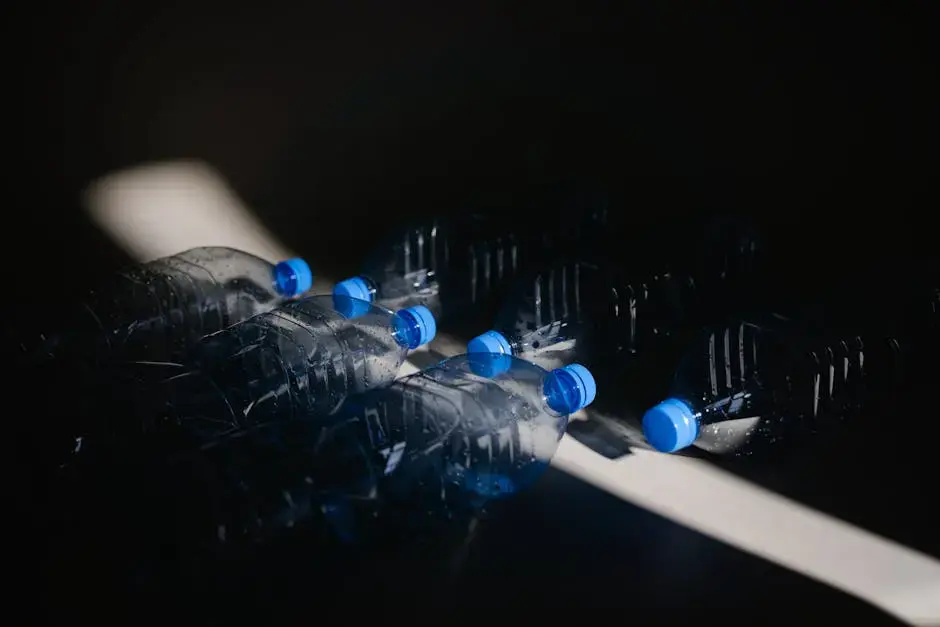Why Choosing Thoughtful Water Bottle Design Matters for Environmental Impact
- Site Admin
- May 12
- 4 min read
In a world increasingly focused on sustainability, the design of everyday items plays a crucial role in our environmental footprint. Water bottles, often overlooked, are one of those items that can have a significant impact. Thoughtful design not only enhances functionality but also considers ecological effects, from the materials used to the life cycle of the product. Let’s dive into why the design of water bottles matters and how we can make better choices for the planet.

The Importance of Water Bottle Design
Water bottles come in various shapes, sizes, and materials, but their design profoundly impacts their usability and sustainability. Understanding these aspects can help consumers make informed decisions that align with their values.
Thoughtful water bottle design is essential not just for aesthetics but also for functionality. A good design accounts for user experience—how it feels to carry, how easily it can be opened, and how well it keeps beverages at the desired temperature. These factors influence our day-to-day choices and whether we reach for a reusable bottle over single-use options.
Furthermore, effective design can sometimes be the driving force behind a change in consumer behavior. When people find that a water bottle is not just visually appealing but also practical, they will be more inclined to use it regularly. This repeated use significantly minimizes plastic waste, making it a win-win for both consumers and the environment.
Materials Matter: Choosing Eco-Friendly Options
The materials used in water bottle design not only affect durability but also environmental impact. Options like stainless steel, glass, and BPA-free plastics present varying levels of sustainability, and knowing the differences can guide our choices.
For instance, stainless steel is recyclable and can last for years if cared for properly. It also keeps beverages at their desired temperatures, making it a favorite among many environmentally-conscious consumers. On the other hand, glass may seem fragile, but it's fully recyclable and doesn't leach harmful chemicals into your drinks, making it a safe choice for both you and the planet.
BPA-free plastics have become a popular alternative to traditional plastics, but they still present challenges in terms of recyclability. Understanding these materials not only helps us to make informed purchasing choices but also encourages manufacturers to adopt better practices that minimize environmental impact. With various materials available, consumers have the power to choose wisely.
Designing for Reusability and Longevity
A well-designed water bottle encourages repeated use, reducing single-use plastic waste. From ergonomic shapes to easy-to-clean designs, thoughtful features can make a bottle more likely to be used over time.
Think about it: A bottle that is too bulky or awkward to hold is less likely to be carried around, meaning it's more likely to end up in a landfill. Conversely, a bottle designed with a comfortable grip, fitted lid, and lightweight materials makes it more attractive for daily use. When we are comfortable reaching for our reusable bottles, we make a crucial impact in reducing plastic consumption.
Moreover, longevity is crucial in protecting the environment. If a water bottle is built to last, we can use it for years, thus avoiding waste. Some brands even offer repair programs for damaged items, further encouraging consumers to keep their bottles in circulation longer instead of buying new ones.
Impact on Consumer Behavior and Trends
Consumer preferences are shifting towards sustainability, and brands are responding with innovative designs. Understanding these trends can help us recognize the growing importance of environmentally conscious water bottle options.
As more consumers seek out eco-friendly options, companies are challenged to reimagine their products. You can see this shift in the surge of stylish, functional reusable bottles on the market today, catered specifically to different lifestyles. Whether you prefer hiking, yoga, or just commuting to work, there’s a thoughtfully designed water bottle out there for you.
Brands are increasingly focusing on transparency regarding their production processes. By showcasing how their materials are sourced or encouraging a circular economy, these companies resonate deeply with environmentally-motivated consumers, who are more than likely to make their purchasing decisions based on such values.
How to Identify Thoughtful Designs
When shopping for a water bottle, look for labels and certifications that indicate eco-friendliness. Researching brands and their manufacturing processes can also reveal just how committed they are to sustainability.
Checking for third-party certifications, like those from Cradle to Cradle or the Global Recycled Standard, can help consumers differentiate between truly sustainable products and those that may simply be marketed that way. Taking the time to understand what certifications mean can lead us to make more conscientious decisions.
In addition, reading user reviews can provide insights into how practical and durable bottles are in real life. Real-world experiences often reflect the manufacturer’s promises, offering a more comprehensive view of whether a product truly lives up to its eco-friendly claim.
Ultimately, being a conscientious consumer involves more than just looking for eco-friendly labels; it also requires us to seek out brands that genuinely prioritize sustainability in their business practices.
Embracing Sustainable Choices for a Better Future
Choosing thoughtfully designed water bottles can lead to a healthier planet and promote sustainable living. Every decision counts, and by investing in quality, eco-friendly designs, we contribute to an important shift in consumer behavior. Together, we can make a difference one bottle at a time.




Comments